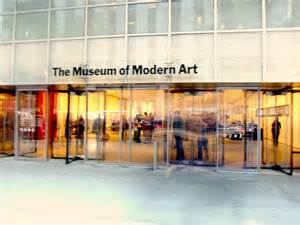Nov 21 2016 - Mar 19 2017
New York City, NY
Francis Picabia: Our Heads Are Round so Our Thoughts Can Change Direction is a comprehensive survey of Picabia’s audacious, irreverent, and profoundly influential work across mediums. This will be the first exhibition in the United States to chart his entire career.
Among the great modern artists of the past century, Francis Picabia (French, 1879–1953) also remains one of the most elusive. He vigorously avoided any singular style, and his work encompassed painting, poetry, publishing, performance and film. Though he is best known as one of the leaders of the Dada movement, his career ranged widely—and wildly—from Impressionism to radical abstraction, from Dadaist provocation to pseudo-classicism, and from photo-based realism to art informel. Picabia’s consistent inconsistencies, his appropriative strategies, and his stylistic eclecticism, along with his skeptical attitude, make him especially relevant for contemporary artists, and his career as a whole challenges familiar narratives of the avant-garde.
Francis Picabia features over 200 works, including some 125 paintings, key works on paper, periodicals and printed matter, illustrated letters, and one film. The exhibition aims to advance the understanding of Picabia’s relentless shape-shifting, and how his persistent questioning of the meaning and purpose of art ensured his iconoclastic legacy’s lasting influence.
Whether you go or not, the exhibition catalog, Francis Picabia: Our Heads Are Round so Our Thoughts Can Change Direction, is illustrated with nearly 500 reproductions. It is a sweeping survey of Picabia's eclectic career embraces the challenge of his work, asking how we can make sense of its wildly shifting mediums and styles. In her opening essay, curator Anne Umland writes that with Picabia, familiar oppositions "between high art and kitsch, progression and regression, modernism and its opposite, and success and failure are undone."
In 15 superb essays, additional authors―including distinguished professors George Baker, Briony Fer, and David Joselit and renowned Picabia scholars Carole Boulbès and Arnauld Pierre―delve into the radically various mediums, styles, and contexts of Picabia's work, discussing his Dada period, his abstractions, his mechanical paintings, his appropriations of source imagery, his multifaceted relationship with print (both in his paintings and as a publisher and contributor to vanguard journals), his forays into screenwriting and theater, and his complex politics. Marcel Duchamp, of course, but also Nietzsche and Gertrude Stein make repeat appearances along the way.
Turning to Picabia's contemporary legacy, Cathérine Hug maps the history of his critical reception and interviews contemporary curators and artists, including Peter Fischli, Albert Oehlen, and David Salle. A lively 30-page chronology illustrated with archival photographs and ephemera gives readers a year-by-year account of the artist's colorful life and of his interactions with fellow artists and critics, friends, and lovers. Together these essays suggest that the unruly genius of Picabia offers us a powerfully relevant and provocative alternative to the familiar narrative of modernism.
Exhibition Venues & Dates
Nov 21 2016 - Mar 19 2017
New York City, NY

